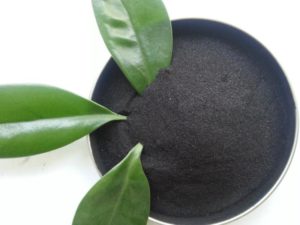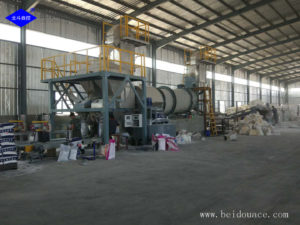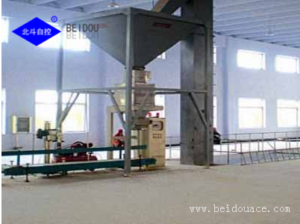Indian Fertilizer Industry at A Glance
 History
History
Fertilizer is defined as any sustance which is organic and inorganic, natural or artificial,single or blends that are required by plant growth.The fertilizer industry comprises establishments primarily engaged in nitrogenous fertilizer manufacturing, phosphatic fertilizer manufacturing and fertilizer manufacturing.
India is the second biggest consumer of fertilizer in the world next only to China. According working group report on fertilizer industry for twelfth five-year plan all India demand forecast of fertilizer 2012-13 to 2016-17 are given table.
| Year | Urea | DAP | NP/NPKs | SSP | MOP* |
| 2013-14 | 31192 | 11784 | 10577 | 4682 | 4343 |
| 2014-15 | 32029 | 12002 | 10861 | 5091 | 4492 |
| 2015-16 | 32858 | 12212 | 11142 | 5513 | 4643 |
| 2016-17 | 33677 | 12413 | 11420 | 5948 | 4793 |
| 2017-18 | 33754 | 12764 | 11841 | 6476 | 4934 |
 Market Insights
Market Insights
1. Gujarat:
Gujarat is the largest producer of fertilizers in India and accounts for more than one- fourth of the total production of nitrogenous as well as phosphatic fertilizers of the country. This state has more than 14% of the country’s total installed capacity.
2. Tamil Nadu:
This state accounts for about 11 per cent of the country’s installed capacity. At present Tamil Nadu is the second largest producer of phosphate fertilizers (about 16%) and the fourth largest producer of nitrogenous fertilizers nearly 9% of India. Nearly 65 per cent of the capacity is for nitrogenous fertilizers. Neyveli, Ranipet, Tuticorin, Ennore, Coimbatore, Mettur Dam, Cuddalore, Avadi and Manali are the main producing centres.
3. Uttar Pradesh:
This state accounts for about 9 per cent of the country’s total installed capacity. About 17 per cent of nitrogenous and 3.4 per cent of phosphate fertilizers of India are produced in Uttar Pradesh. Important centres of fertilizer production in Uttar Pradesh are Kanpur, Phulpur, Gorakhpur, Varanasi and Magarwara. New plants have been/are being set up at Babrola, Aonla, Shahjahanpur and Jagdishpur.
4. Maharashtra:
Maharashtra accounts for over 11 per cent of the nitrogenous and about 7 per cent of the phosphatic fertilizers of the country. The state has six plants in all. Mumbai with three plants is the largest producer. The remaining three plants are located at Trombay, Ambarnath and Loni-Kalbhor.
5. Andhra Pradesh:
This state accounts for about 7 per cent of the total installed capacity and produces about 11 per cent of the phosphate and 3.5 per cent of nitrogenous fertilizers of India. The main centres of production are Vishakhapatnam. Ramagudam, Kakinada, Maula Ali (Hyderabad), Tadepalli, Tanukur and Nidadavole.
6. Orissa:
Orissa has 6 per cent of the total installed capacity and produces 11.6 per cent of the phosphate and 3 per cent of nitrogenous fertilizers of India. The industry is located at Rourkela, Talcher, and Paradwip.
7. Kerala:
Kerala also accounts for 6 per cent of the total installed capacity and produces about 6 per cent phosphate and 3.5 per cent nitrogenous fertilizers of India. Its fertilizer units are located at Alwaye, Kochi and Karimnangalam.
8. Rajasthan:
This state has 5 per cent of the country’s total installed capacity and accounts for about 2.3 per cent of nitrogenous and 1.6 per cent of phosphatic fertilizers of India. More than half of the state’s production comes from Kota. Debari, Khetri, Saladipur (Sikar district) and Chittaurgarh are the other important centres.
 Top Leading Fertilizer Machine Company
Top Leading Fertilizer Machine Company
QINHUANGDAO BEIDOU COMPANY is a well – known global leading bulk blending fertilizer machine manufacturer enterprise. An ISO 9001 : 2008 Certified Company engaged as a Manufacturer, Exporter, Importer and Marketing company of bulk blending fertilizers. Hence, we are actively engaged in the production of International Quality Bulk Blending Fertilizer Machinery. We specialize in offering an extensive and qualitative range of Mixed Fertilizer Equipment,like BB fertilizer production line, Water soluble fertilizer production line, Bio organic fertilizer production line, belt weigher, packaging scale, etc.
This article is contributed by Beidou Overseas Business Department.
The previous article is: How To Read The Numbers On Fertilizer Bags
